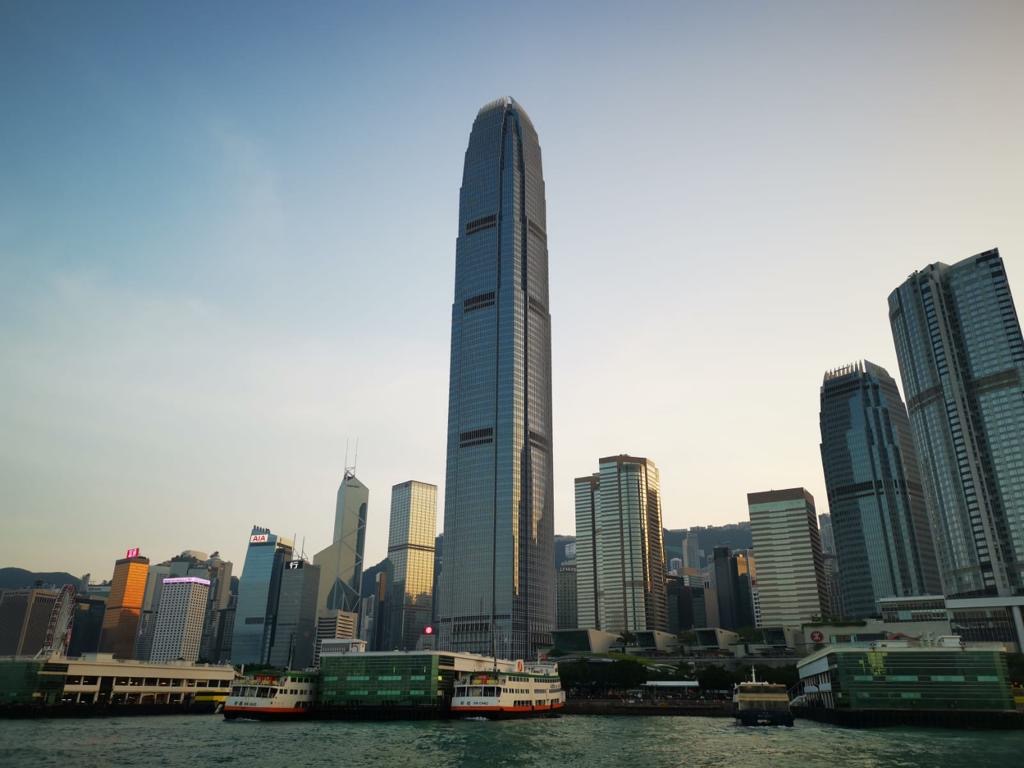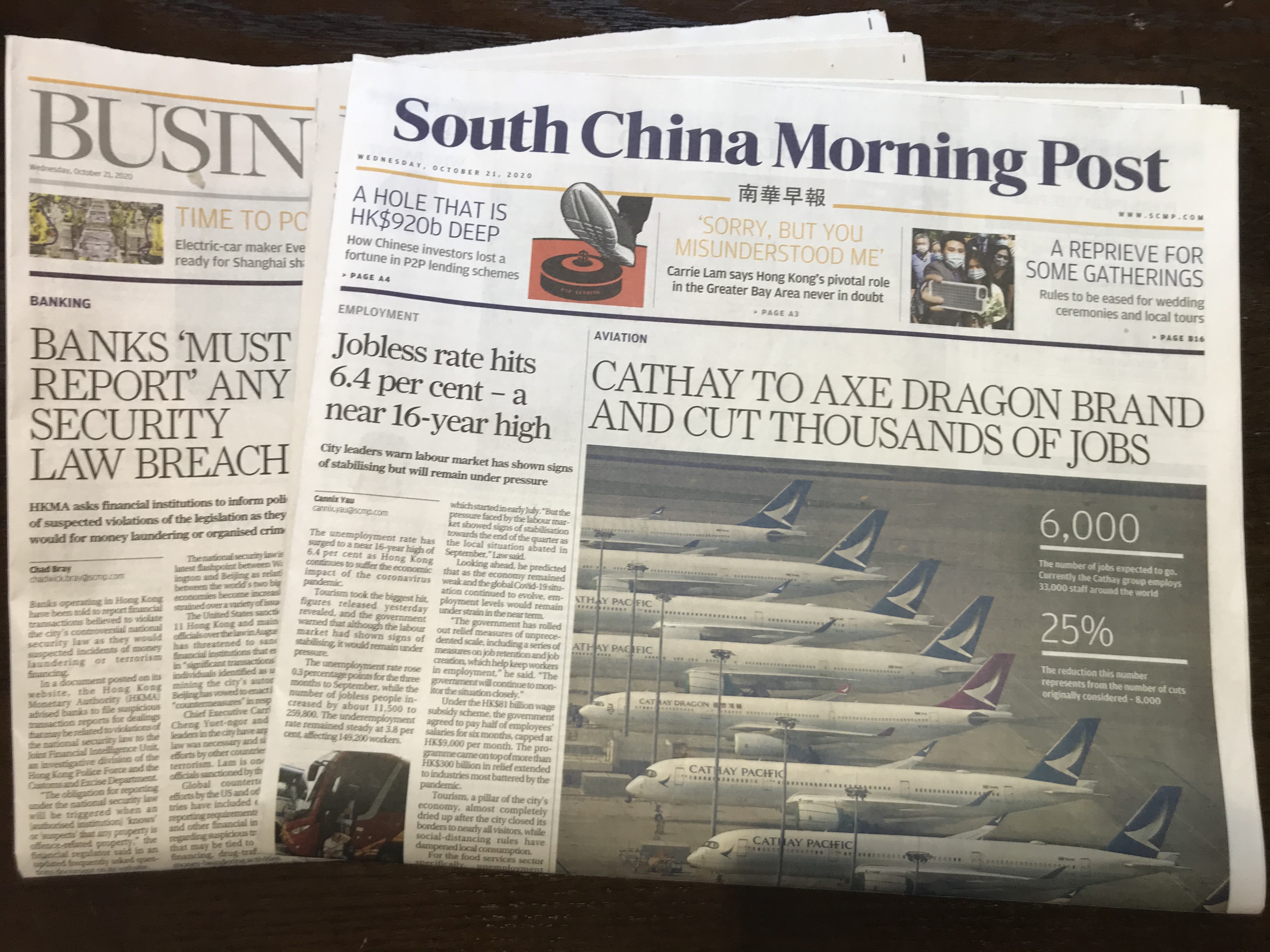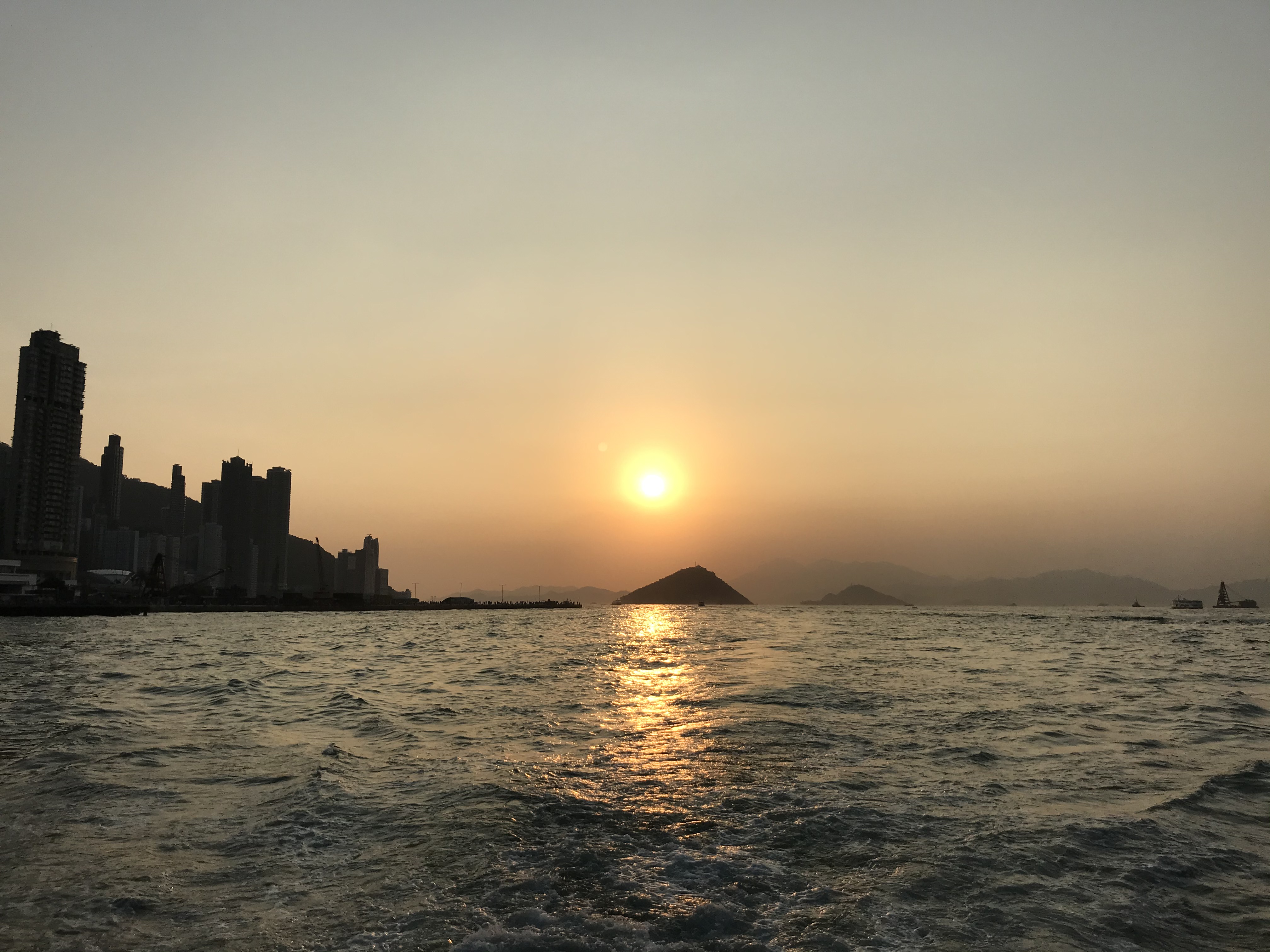
The message popped up on my wife’s iPhone shortly after 11 a.m. on Saturday. It was a brief one-paragraph note that made us feel like were were about to graduate and get a diploma of some sort.
“Your 14-day compulsory quarantine period will end at midnight today,” read the message from the Hong Kong Health Department, delivered to us via the StayHomeSafe app. It advised us that we would be able to cut off our monitoring wristband, uninstall the app and thanked us for our cooperation fighting the COVID-19 pandemic.
If you’ve traveled internationally during the pandemic, you’re probably familiar with the slew of new health precautions governments are taking to slow the spread of the virus. There’s probably few places though that have taken it as seriously as Hong Kong. Here’s a bit of a guide to how it works and what it was like to go through it.
My wife and I moved here two weeks ago from New York to start new jobs. For weeks, we’d been reading about the protocols under Hong Kong’s disease control prevention regulations (known as Cap.599H). The rules require, among other things:
- All travelers arriving from certain high-risk countries for COVID transmission — including the U.S., India, and the U.K. — to obtain a negative result nucleic acid test for COVID within 72 hours of their Hong Kong flight departure (if you have connecting flights, note that the clock starts from the flight that’s going to land in Hong Kong);
- Provide proof of the test result, lab certification and confirmation of a two-week hotel reservation in Hong Kong upon arrival, in addition to undergoing an additional COVID test at Hong Kong International Airport;
- Undergo a two-week quarantine at the hotel during which you log your temperature and symptoms everyday and don’t leave the room for two weeks. If you do, you face up to six months in jail and a HK$25,000 (about $3,200) fine, which has been enforced.
If this sounds all like a bit much to you, consider the fact that while the U.S. is currently recording its highest daily number of new coronavirus cases (nearly 100,000 per day as of Friday) and Germany and France are instituting new lockdowns to slow the spread of the virus, Hong Kong is instead opening back up. As we were completing our quarantine, the government announced it would allow beaches to reopen, let bars stay open longer, and lift the cap on how many people can be seated at a restaurant together. Today, my wife had her first working day back in an office since we both started working from home in March in New York.
So, what’s it like to go through Hong Kong’s quarantine? If you’re about to make the journey or are just curious what it’s like, read on. If not, skip to the all-important food section below.
Honestly, it isn’t that bad — as long as you prepare for it ahead of time and get all your paperwork in order before you arrive. We got our pre-flight COVID tests done at NYU Langone’s Tisch Hospital, which was recommended on the HK Quarantine Support Facebook Group. We got our results back within hours, and when we realized that the lab result left out my wife’s middle name, it was easy to get an updated result. All the lab certifications required under Hong Kong regulations are also available online.
When we got to JFK Airport for our flight, Cathay Pacific staff first checked all our paperwork to make sure we had the required documents; if we didn’t, they wouldn’t have even let us board the flight. It was a bit uncomfortable flying with a mask for 16 hours, but hey, what can you do (hint: sleep through most of it).
Upon arrival at Hong Kong International Airport, we filled out a health declaration form on our iPhones and presented the completed QR code at various checkpoints as we wended our way through control points set up at the airport. It was all very organized and we never felt lost or uncertain about what was happening: we got our paperwork inspected again, then we got our monitoring wristbands for the quarantine (made by TraceSafe), then we took our deep-throat saliva tests for COVID (more comfortable than a nose swab), then we waited for the shuttle to another terminal to take a bus to a test result holding center as we awaited our results. From deplaning to bus departure, the whole process took about four hours.
The test result holding center was a four-star hotel in Kwai Chung, just on the other side of the bridge from Lantau Island, where the airport is located. I’ve seem some of the photos of unappealing accommodations for the first-night test result hotel stay arranged by the government (like mold and dirty rooms), but luckily our experience didn’t include any of that. And the breakfast and dinner left outside our doors was pretty good, too. Anyhow, after a good night’s rest, we got a call the next morning around 10 a.m. that our COVID test results had come back negative and we were free to leave. We hopped in a cab to our quarantine hotel in Central, settled-in and that was it for day one of the quarantine.
The remaining thirteen days went by pretty quickly. The main thing we noticed about being indoors in the same room all the time was that we began to feel sluggish and tired — even if we’d gotten a good night’s sleep the night before. We combated the sluggishness that by doing online exercise classes and taking “walks” around our apartment to see who could prevail in what amounted to pretty lame Fitbit step competitions.
We kept our wristbands on at all times and the StayHomeSafe app would go off every few hours asking us to scan the QR codes on the bands to check-in and confirm we were present in our hotel room. Sometimes it would go off several times in short order — I clocked it in at 8:04 a.m., 9:43 a.m. and 11:27 a.m. one morning alone — but after a few days the check-ins became less frequent. We also logged our temperature daily on a log sheet provided to us by the health department at the airport.

In between these daily routines, we passed the time by working, reading, journaling, planning ahead for our apartment search and chatting with friends and family via Skype and WhatsApp. I also got the South China Morning Post delivered to our room each morning and made it part of my routine to read the paper everyday, even if the headlines weren’t always encouraging.

All the while, we had an enticing view of the city right outside our window to remind us what was waiting for us on the other side of the quarantine. We’d open up the windows daily to get some fresh air and peek outside. That provided some good motivation.

On day nine, the Hong Kong Health Department delivered a follow-up saliva COVID test and came by again the next day to pick it up. Once we completed that milestone, we knew we were in the home stretch.

Food
Keeping a healthy diet is important when you’re indoors all the time. But Hong Kong is also a great food town with lots of amazing cuisines and dishes to sample. We struck a balance between the two by doing some of our own cooking and splurging on lunches and dinners selectively.
Luckily, our unit had a small kitchenette and microwave oven where we could heat up food. We stocked up on groceries from Parknshop and Wellcome, both of which provide free delivery over HK$500 (USD$65). That made it easier to plan our own meals and eat healthy in between the more decadent dinners we ordered on Food Panda and Deliveroo from nearby restaurants.

We sampled local dishes like baked rice, cha siu bao (barbecue pork buns), roasted goose and food from other cuisines such as laksa (Malaysian curry). Our favorite calorie splurge, however, were the egg waffles. They come in various inventive flavors, such as chestnut, coffee, sesame, seaweed and various other iterations. We made sure this was a well-earned meal after an online workout class.

One tip I’ll share for delivery apps: While Food Panda is fairly quick (one order showed up in like 10 minutes), buying groceries takes longer and there may only be certain delivery times available in your area throughout the week. So take care to plan your meals accordingly and don’t assume if you order a grocery haul in the morning it will show up in the afternoon.
When it’s all over
We’d just settled into the routines described above when we got that message on our StayHomeSafe app saying our quarantine was ending. We took off our bracelets at midnight and went outside for a stroll in Lan Kwai Fong, bumping into a rush of Halloween partyers that was unlike anything I’d ever seen in New York.
My advice is to reward yourself when it’s all over by doing something fun to reset. We went on a junk boat trip to Lamma Island with some friends, soaking in some amazing views and feeling grateful we’d done our part to help prevent the spread of the virus. We’re now looking forward to enjoying everything this great city has to offer.
